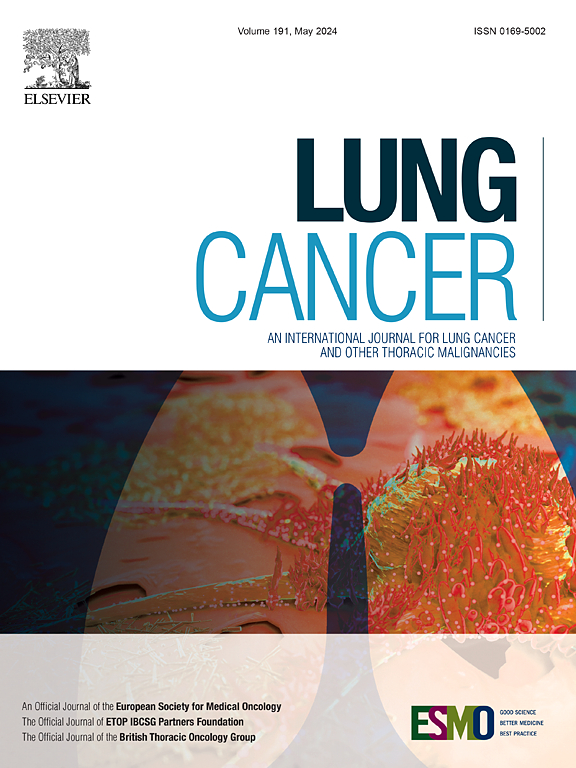Patterns of treatment prior to death among those with lung cancer: A national study in a universal healthcare context
IF 4.4
2区 医学
Q1 ONCOLOGY
引用次数: 0
Abstract
The intensity of cancer treatment delivered to patients in their final days of life will likely vary depending on many factors. This study examines interventional procedures, radiation therapy and systemic therapy receipt in the 30 days prior to death in a national cohort of lung cancer patients who were diagnosed and died between 2012–2019 (n = 14,822), and explores the extent to which this receipt differs depending on multiple sociodemographic and cancer-related factors. We found that the most common form of treatment was palliative radiation therapy (age std. proportion: 11 %), followed by palliative interventional procedures (6 %) and systemic therapy (5 %). Curative interventional procedures and curative radiation therapy were extremely rare prior to death (<1%). Almost all palliative interventional procedures were drainage or pleurodesis procedures (99 %). Receipt of palliative radiation therapy and systemic therapy (but not interventional procedures) reduced with increasing age, and also with increasing comorbidity. Palliative interventional procedures and palliative radiation therapy were more likely among those with non-small cell lung cancers than other forms, while those with small-cell lung cancers were much more likely to receive systemic therapy toward the end of life. Our findings tentatively indicate that clinical services in New Zealand are appropriately reducing futile treatment toward the end of life, although more work is needed to explore this with more granularity than possible in the current study.
肺癌患者死亡前的治疗模式:一项全民卫生保健背景下的国家研究
在患者生命的最后几天,癌症治疗的强度可能会因许多因素而有所不同。本研究调查了2012-2019年诊断并死亡的肺癌患者(n = 14,822)在死亡前30天内的介入手术、放射治疗和全身治疗接受情况,并探讨了这种接受情况在多大程度上取决于多种社会人口统计学和癌症相关因素。我们发现最常见的治疗形式是姑息性放射治疗(年龄和性别比例:11%),其次是姑息性介入手术(6%)和全身治疗(5%)。治疗性介入手术和治疗性放射治疗在死亡前极为罕见(
本文章由计算机程序翻译,如有差异,请以英文原文为准。
求助全文
约1分钟内获得全文
求助全文
来源期刊

Lung Cancer
医学-呼吸系统
CiteScore
9.40
自引率
3.80%
发文量
407
审稿时长
25 days
期刊介绍:
Lung Cancer is an international publication covering the clinical, translational and basic science of malignancies of the lung and chest region.Original research articles, early reports, review articles, editorials and correspondence covering the prevention, epidemiology and etiology, basic biology, pathology, clinical assessment, surgery, chemotherapy, radiotherapy, combined treatment modalities, other treatment modalities and outcomes of lung cancer are welcome.
 求助内容:
求助内容: 应助结果提醒方式:
应助结果提醒方式:


